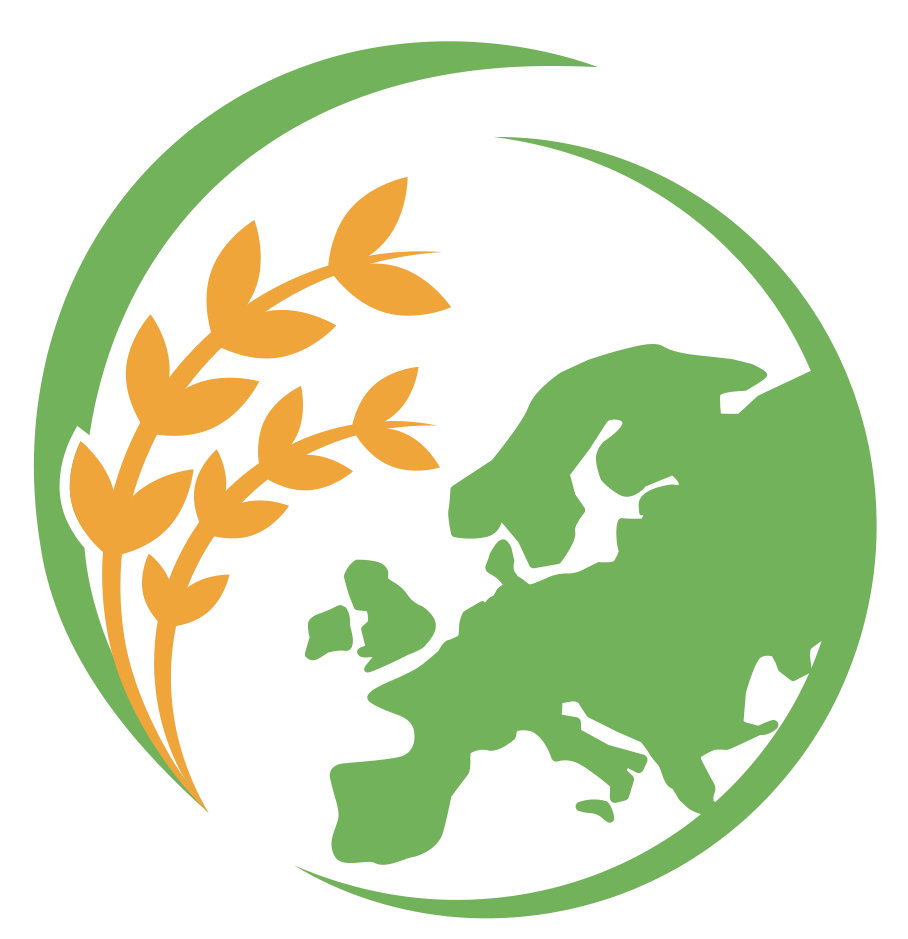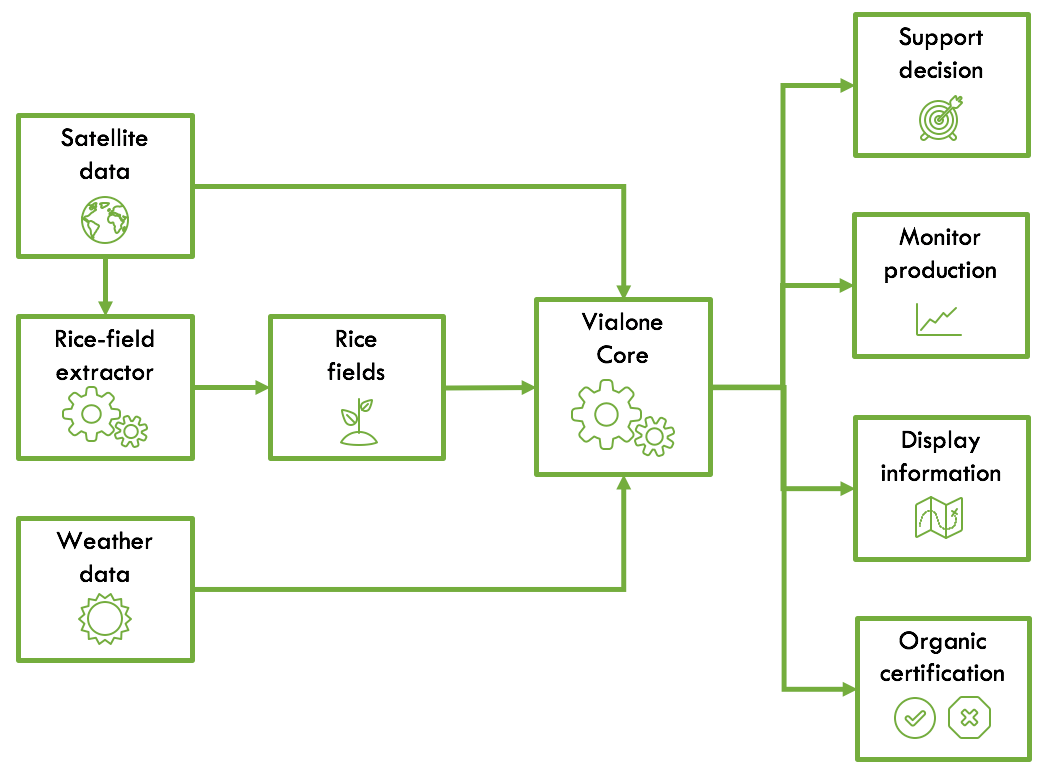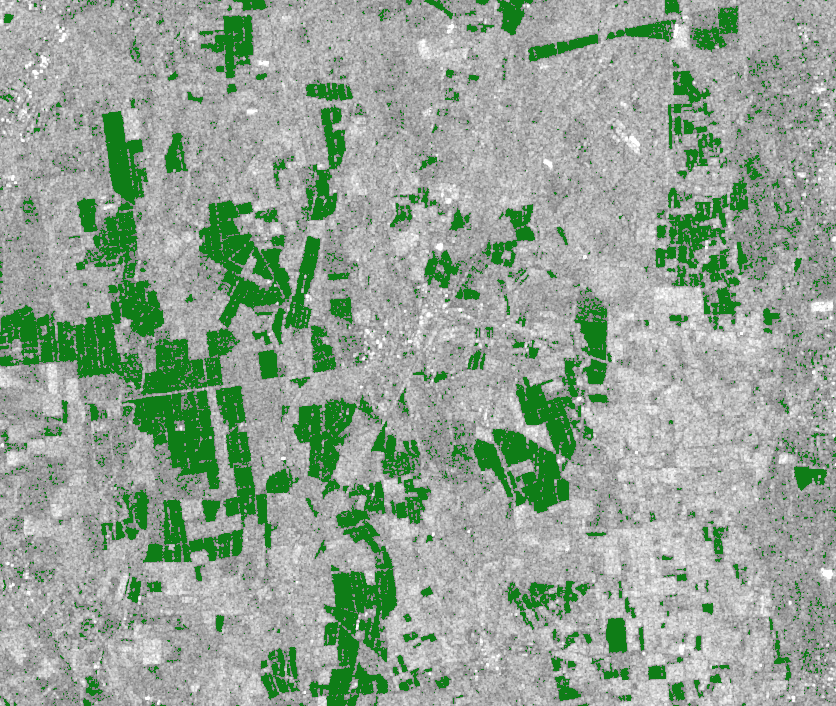
Objectives of the service
The initial aim of the Vialone project is to assess whether a market exists for a service, which constantly monitors the European organic rice growth in order to detect and report anomalies with respect standard development paths, and to forecast crop yield according to data acquired in the field.
The intended Vialone service collects data related to paddy field management and growth in order to confirm, on one side, the correct course of growth and, on the other side, to check all the parameters visible from space and useful for certification purposes. This objective is achieved thanks to the Vialone core in which lies a system for automated retrieval and analysis of satellite Copernicus data, plus data from tailored, technologically advanced weather station, over the areas of interest.
Vialone offers collection and distribution of information relevant to traceability of organic products, highlighting their trends; at the same time, it helps rice growers to manage and care for their crops.
Users and their needs
Expected customers are rice growers and operators in the rice supply chain, in particular organic rice markets. The Vialone platform provides useful information to producers, consortia and distributors to make better-informed management decisions. Rice growers are assisted in managing organic paddy fields, thus increasing the yield, through the provision of real-time data on crops and the surrounding environment. They are also helped in dealing with insurance companies in case of crop loss due to unexpected events, thanks to the independent assessments of the annual yield that Vialone can provide. Operators in the rice market can have the chance to access live data on paddy fields on their own area of interest but also on other regions as satellites can monitor global production. With Vialone, distributors are able to sell a “top quality” organic product thanks to additional declarations about its consistence with all parameters visible from space and, ultimately, the service benefits also mature consumers, that are offered traceability information about the high-quality rice they are considering for purchase.
The largest producers of rice in Europe are Italy, Spain, Greece, Portugal, France, in decreasing order of share. We will start with a pilot in Italy, a country producing more than half of total EU rice, to then extend the service to all relevant producers of organic rice in the EU.
Service/ system concept
The proposed solution represents an advanced combination of Earth Observation and environmental data, as shown in the figure below. These two sources of information are automatically combined to determine the optimal rice growth parameters, analyse certification-related indices based on the adopted agronomical techniques and to support decisions made by rice producers. On the long term, the data acquired will be used to fine-tune the models and extend the applicability of the system to more complex cases. Moreover, continuous monitoring will make natural treatments more accessible, being these usually limited by the greater precision and timeliness required with respect to chemical treatments permitted in traditional agriculture but banned from the organic domain.

Figure 1: concept scheme of the Vialone system
Space Added Value
Vialone automatically accesses the Copernicus Hub through an API-based device, and selectively downloads Sentinel datasets on the relevant areas. Specific indicators are computed from open Sentinel data, but very high spatial- and temporal resolution imagery is also considered for retrieving some critical parameters and activities which require timeliness in being monitored (e.g. for spotting out use of chemicals, forbidden in organic cultivation practices).
The service requires a continuous flow of information. Copernicus and its long-term investment plans helps creating favourable conditions to the development of our business.
Various sources offer weather data in various forms, but in a non-homogeneous manner and mostly without long-term commitments. Thanks to the custom-designed, small, low-cost and low-maintenance meteorological stations that have been developed for our previous project Saturnalia, we will be relying on our own infrastructure for procurement of tailored data.

Figure 2: rice paddy field mapping in Vialone (radar image)
Current Status
Vialone has completed a preliminary market assessment, which included interviews to representatives of all the links in the concerned value chain. The service appears to make commercial sense, and it also seems feasible from a technical standpoint. Internal R&D is in progress, carried out in cooperation with organic rice growers that provide input and give feedback. The aim is now to build an actual, operational service and start offering it on the market.



